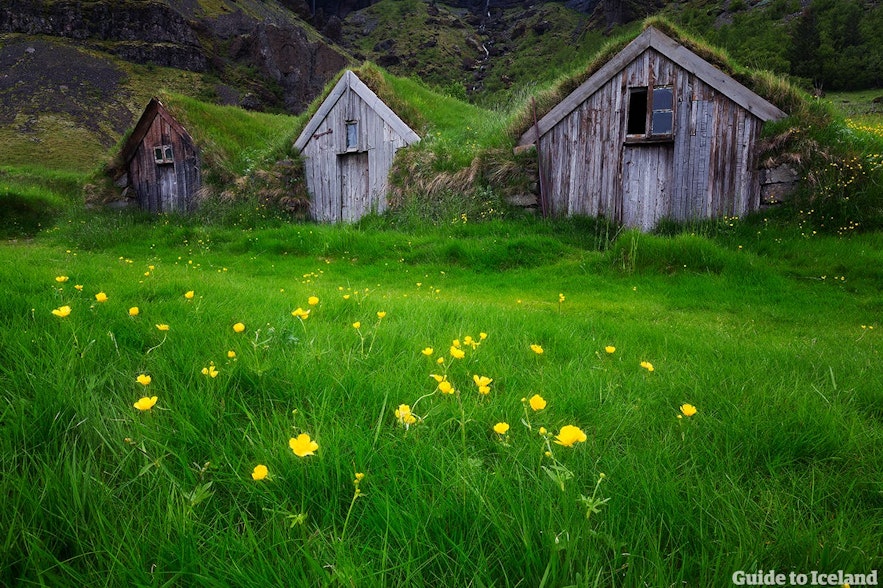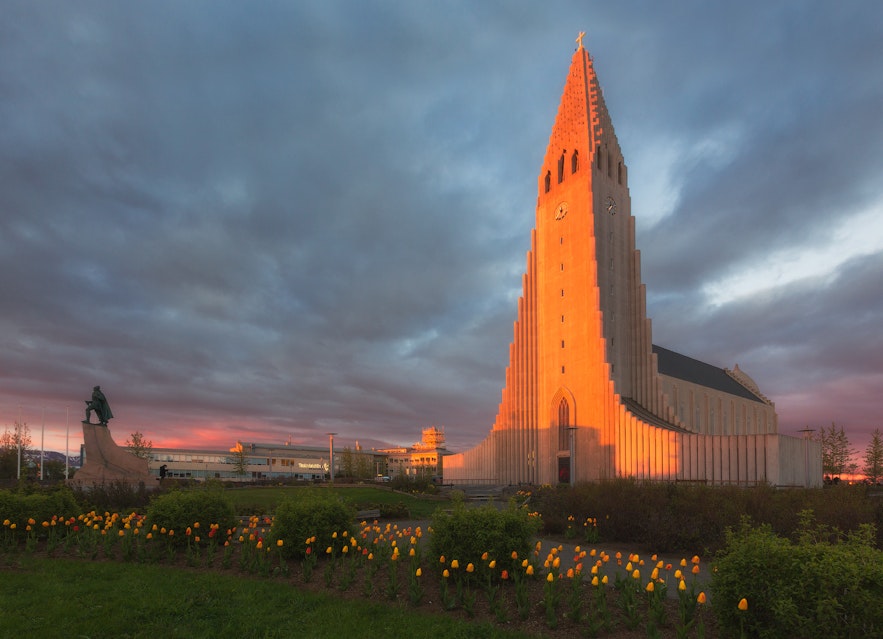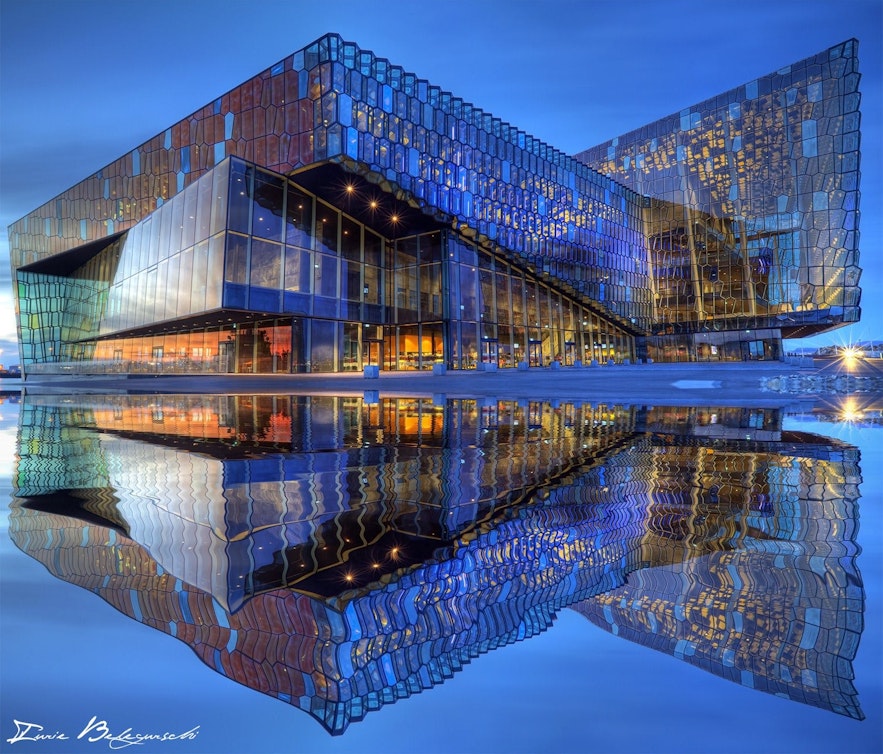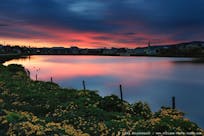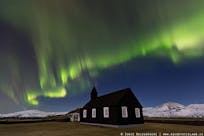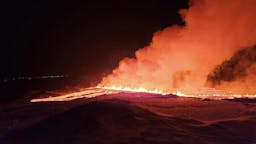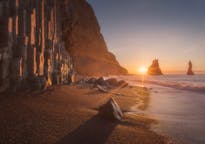
The History of Icelandic Architecture
What is the history of Icelandic architecture? How long ago did Icelanders live in turf houses? What was the basis for the formation of Iceland's capital city Reykjavík? Who were the leading architects of Icelandic society?
When it comes to architecture, Iceland is something of an oddity in regard to its helter-skelter collage of different influences and design styles, despite the nation’s capital constituting a modern Nordic metropolitan (albeit a minuscule one), Reykjavík had, for the longest time, no definite architectural direction of its own.
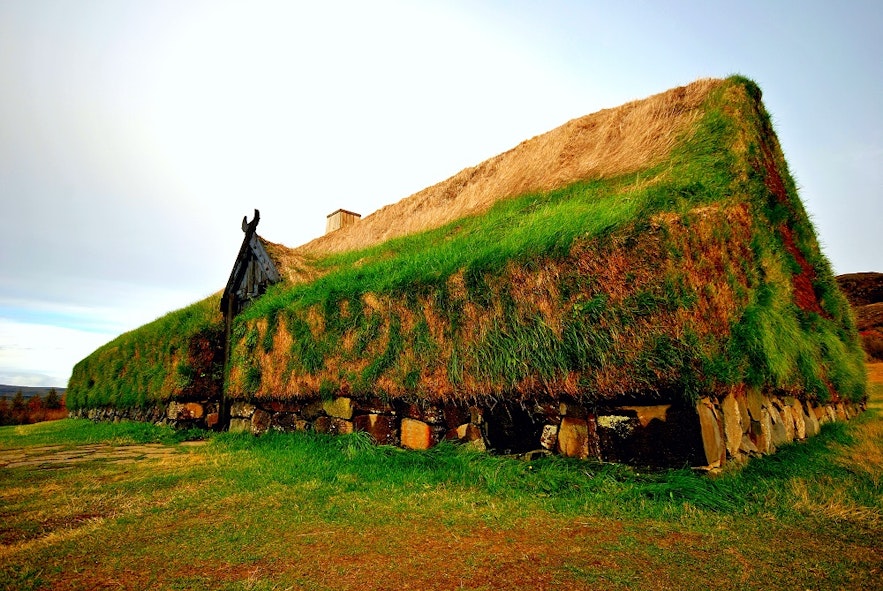
That is not to say the land of ice and fire has no historical traditions regarding its housing designs. The scattered farmsteads of the Settlement Era and the Viking Age are an integral part of Iceland's culture but might not hold the same cultural esteem of mainland Europe’s coinciding plazas and castles.
- See also: 10 Reasons Icelanders are Proud of Iceland
However, these humble but ingenious abodes reflected people who resourcefully lived in harmony with their magnificent, precarious, natural surroundings.
So read on to learn of the connection between Iceland's intermingled architectural styles; the history of Icelandic housing design; and to discover the influential few individuals and architects that helped shape the face of a nation.
A Brief History of Icelandic Architecture
From the Age of Settlement up until the turn of the 20th Century, turf houses dominated Icelandic housing design. These abodes were, in essence, timber houses, methodologically based upon the longhouse designs of Norway, Sweden, Denmark, and the Scottish Isles, but adjusted to specific Icelandic conditions.
The foundation of turf houses was usually one or more layers of rock but with a wooden structural base. The walls were double-stacked and lined with compressed soil for isolation; before an outer layer of turf, cut into strings, diamonds or squares got pressed together, creating the grassy surface of these original and iconic Icelandic homes.
- See also: Where Did Icelanders Come From?
Before the arrival of coal and the harnessing of geothermal energy, there exist telling examples of the era's ingenuity when it came to the issue of heating. One was that, sometimes, farm animals were based on the ground floor while the people resided upstairs, thus benefitting from the animals' warmth that rose upwards through the ceiling.
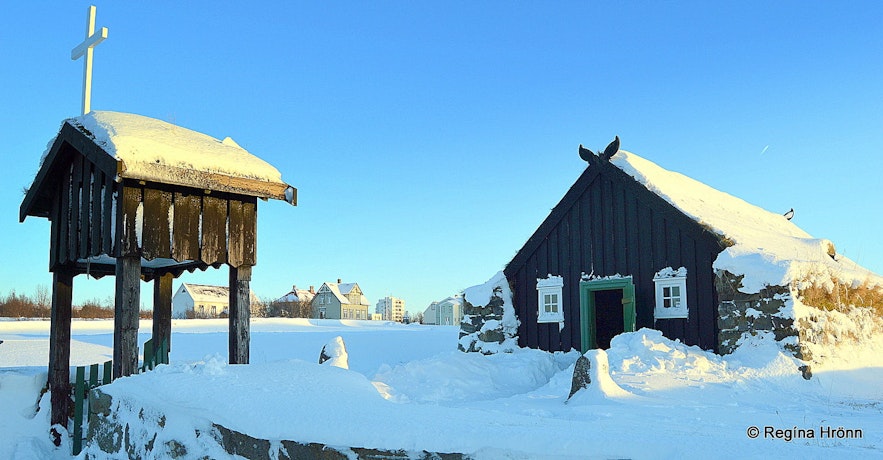 Photo by Regína Hrönn Ragnarsdóttir
Photo by Regína Hrönn Ragnarsdóttir
To this day, several turf houses have been preserved and kept for historical purposes, although most of these were the more lavish homes of wealthy farmers or priests. Such preserved treasures of local heritage include Glaumbær in Skagafjörður, Laufás in Eyjafjörður and Bustarfell in Vopnafjörður.
- See also: travel blog posts on Glaumbær, Laufás and Bustarfell
Examples of smaller abodes that have still been preserved, are Selið in Skaftafell and Árbær in Reykjavík, with the latter today being part of an open-air museum. Icelanders are Nordic forerunners in the upkeeping of turf houses and their building methods—and no wonder—given how shortly ago they were commonplace.
- See also: Top 9 Museums in Reykjavík and Regína's blog on the Árbær Museum at Christmas
Change might have happened leisurely, but around the middle of the 18th Century, the Danish government started to implement industrial development into Icelandic society, hence beginning what we could call the stone age of local architecture.
Stone houses began rising all over the country, most for official purposes, at the same time, the city of Reykjavík truly started to form; growing as a trading post and center of the country's first industrial factories.
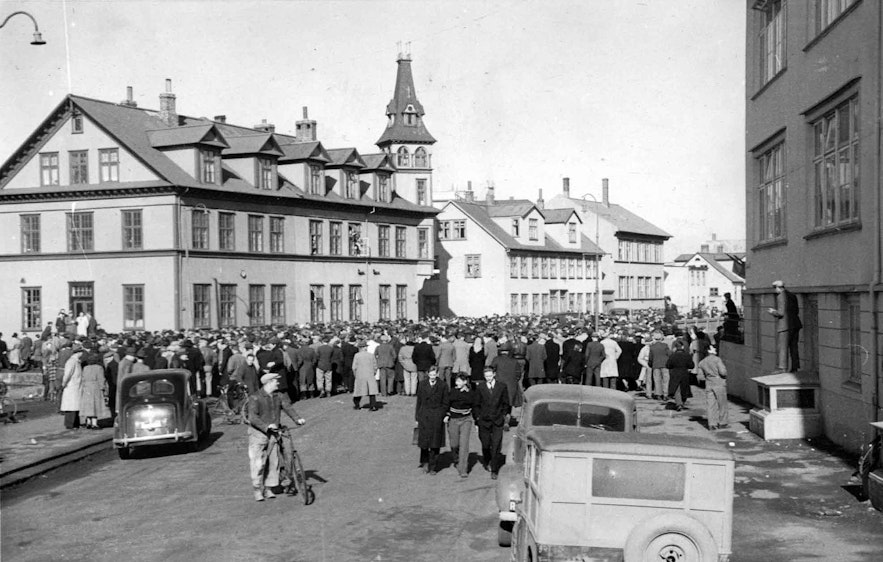 Photo from Wikimedia, Creative Commons, by Valgerður Tryggvadóttir. No edits made.
Photo from Wikimedia, Creative Commons, by Valgerður Tryggvadóttir. No edits made.
A key figure in this whirlpool of development is Skúli Magnússon, often called the Father of Reykjavík, but he served as Iceland’s federal sheriff and one of the leading founders of Innréttingar—a national movement of industry and enlightenment in the 1750s.
Skúli had a workstation built for him on Viðey Island just off the coast of Reykjavík’s harbor, a grand stone house known as Viðeyjarstofa that birthed a new chapter in local construction. A string of stone houses followed from 1750 through 1790, such as the President's abode Bessastaðastofa in Garðabær, and Landakirkja Church in the Westman Islands.
The 19th Century also saw the creation of merely two brick houses, but one burned down and the other got demolished—bricks didn’t prove ideal for the Icelandic weather, and people quickly turned back to building with stone.
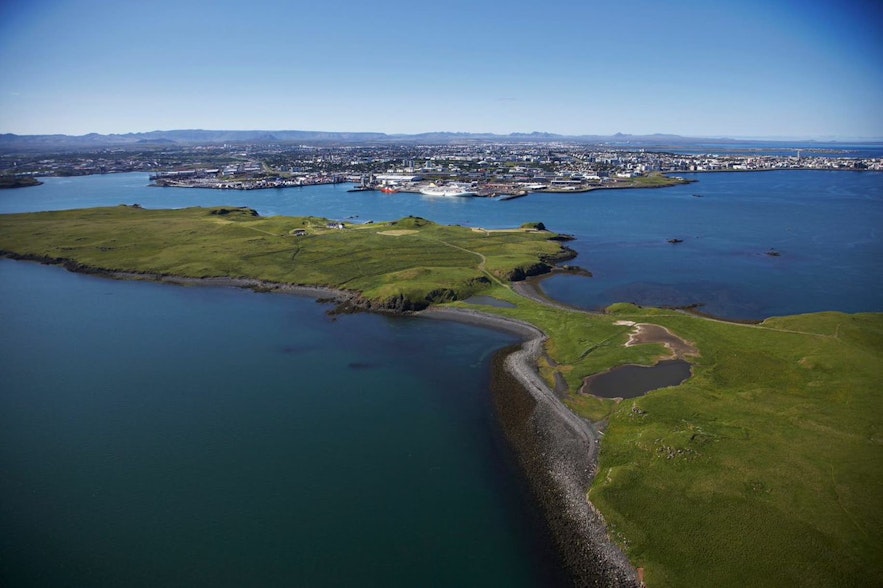 Photo from Combination 7 Hour Boat Trip to Videy Island & Whale Watching Tour with Transfer from Reykjavik
Photo from Combination 7 Hour Boat Trip to Videy Island & Whale Watching Tour with Transfer from Reykjavik
- Get unlimited ferry access to Viðey Island with your Reykjavík City Card
The Icelandic nation also boasts a long history of timber houses, or since approximately the early 1300s, but scarcely so since wood was of limited supply in the barren countryside of this volcanic island. Still, the turf houses of old were essentially timber houses—only coated, supported and isolated with turf and soil from the local environment.
Then, in the 1860s, a new material that would supply the Icelandic people with an unexpected upgrade in their housing design started arriving at the island’s shores. This marvel turned out to be corrugated iron—and one needs only take a stroll down any old street in Iceland to notice it still embellishes an abundance of buildings, in a parade of different colors, all over the country.
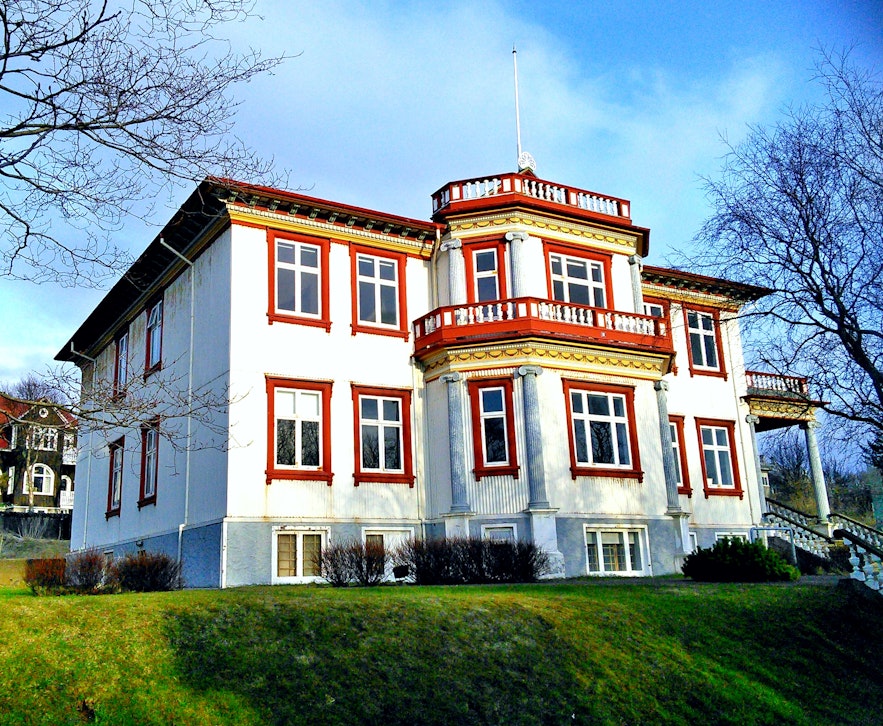
Invented in 1828 and brought to Iceland by British merchants in the 1860s to trade for wool, corrugated iron is, around the world, considered quite the dull and lacklustre building material.
Most often utilized solely for industrial purposes—such as to build sheds, storages or barns—in Iceland, the material proved so ideal for the local weather that it got embraced by the nation as a whole, allowing it to develop aesthetically.
- See also: Weather in Iceland & Best Time to Visit
For instance, while the iron plates of such houses are elsewhere applied horizontally, in Iceland they are vertical, making them better suited for fending off rain and salt—but also arguably resulting in a more aesthetic appeal.
Everything from official buildings and churches to small houses and lavish homes got the corrugated iron makeover, as it got painted in different colors and interwoven with wooden window frames or decorative bits of adornment.
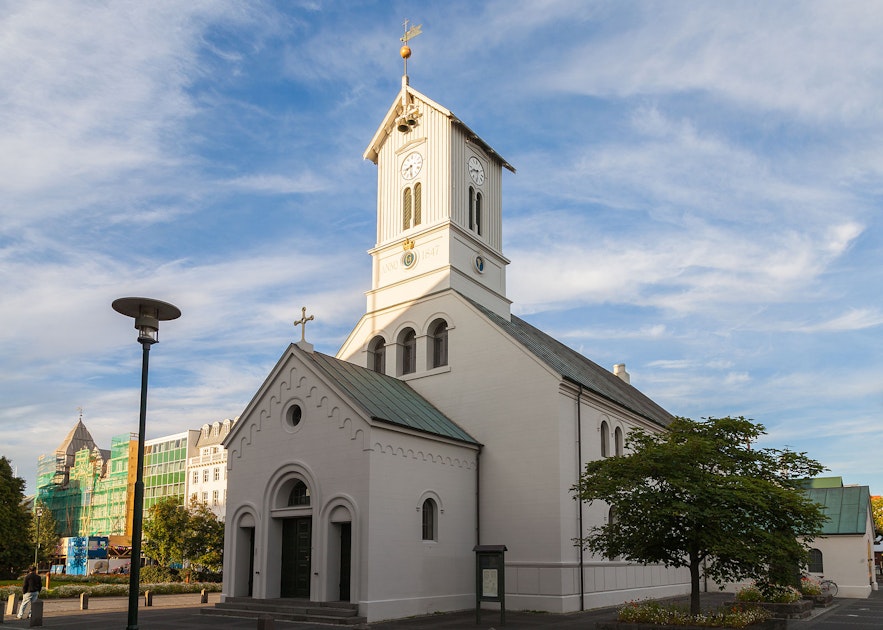 Photo from Wikimedia, Creative Commons, by Diego Delso. No edits made.
Photo from Wikimedia, Creative Commons, by Diego Delso. No edits made.
Throughout all of this, Iceland still had no architectural style of its own to speak of, let alone native architects to develop such an opus. Instead, foreign influences and a merger of different styles and methods were the status quo.
The Icelandic forerunners of development saw the world's different architectural styles as something of a buffet to choose from. That meant, for instance, that when a church was to be built, the designer might have chosen a Gothic style, but for a bank, they may have decided on a Neoclassical approach, and so on.
This method of pick-and-choose, collectively known as Historicism, would be the case until Functionalism took over local housing design in the 1930s, through a period often called Steinsteypuöldin or 'the cement age' of Icelandic architecture.
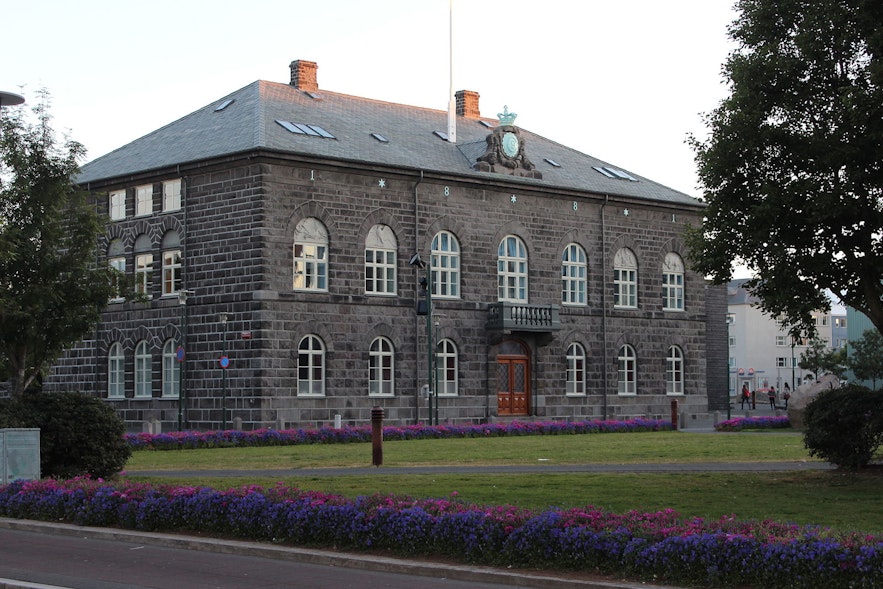 Photo from Wikimedia, Creative Commons, by Zinneke. No edits made.
Photo from Wikimedia, Creative Commons, by Zinneke. No edits made.
The timber houses, whether coated in corrugated iron or not, were often wholly imported from Norway, or new ones built which were based on the imported designs. As for the stone houses of the 19th Century, most of them were designed by Danish architects appointed by the Danish government.
Even though Denmark's imperialistic reign over Iceland's culture and trade has never been cause for a national celebration, few disagree on the aesthetic contributions of such celebrated architects as Nicolai Eigtved and Lauritz de Thurah, both of which designed multiple buildings locally.
These Danish artists were the very best of their domain, providing the Icelandic nation with a welcome stepping stone into an architectural revolution of their own.
It was not until the turn of the 20th Century that Iceland began to see its first architects appear, and as it turned out, these few key figures became responsible for a remarkable portion of the country’s entire visage. Following are segments on four such 20th Century pillars of Icelandic architecture.
Gudjon Samuelsson | The Celebrated Father
When discussing Icelandic architecture, Guðjón Samúelsson is someone who hardly needs an introduction. The South-Iceland-born virtuoso served as the country’s official state architect over the course of his career spanning three decades, making him responsible for a multitude of Iceland’s most iconic buildings.
Guðjón studied housing design in Copenhagen before returning to Iceland in 1915, the same year that a historical fire took place in Reykjavík that destroyed some dozen buildings in the city center.
Through this tragedy, Guðjón found himself as the right man at the right time, subsequently getting hired to design what would be the city's largest building at the time of its construction.
It was deemed clear that the Norweigan timber houses were too sensitive to city fires, and afterward, cement prevailed as the preferred material of any building of importance, with Guðjón officially appointed to design the majority of them.
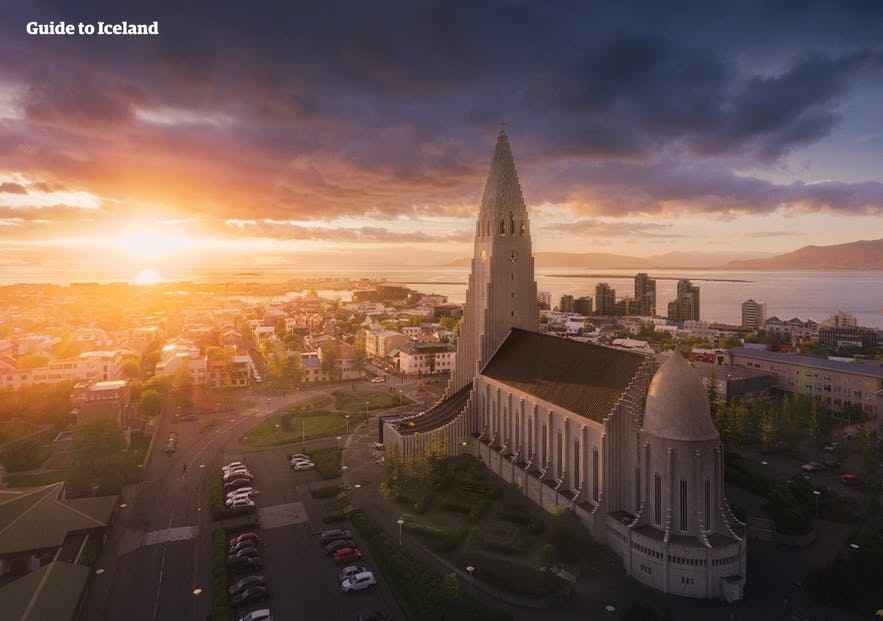
The building, formerly known as the Nathan & Olsen House, later Reykjavíkurapótek, is a grand concrete corner-construction located at Austurstræti 16. Inspired by the works of Eliel Saarinen—one of Scandinavia’s most celebrated architects—the monument marked the beginning of a new, more modern character for Reykjavík.
Although Guðjón approached many of his projects in such a manner, inspired by other architects and styles, he also sought to give his home country something that it sorely lacked—an architectural style to call its own.
 Photo from Wikimedia, Creative Commons, by James Mason-Hudson. No edits made.
Photo from Wikimedia, Creative Commons, by James Mason-Hudson. No edits made.
Wanting to contribute to the revival of the Icelandic Commonwealth, the last time period of independence before the seven-hundred-year reign of foreign powers that followed, Guðjón mixed different architectural styles with influences from Iceland’s most prized attributes: its stunning environment and sweeping natural landscapes.
Amongst the veritably hundreds of projects that Guðjón managed over the years, he birthed such lionized landmarks as the National Theatre Þjóðleikhúsið on Hverfisgata and the one and only Hallgrímskirkja Church on Skólavörðuhæð. Both projects were greatly influenced by the basalt rock formations of the local nature, as well as Iceland's sweeping volcanic landscapes and glaciers.
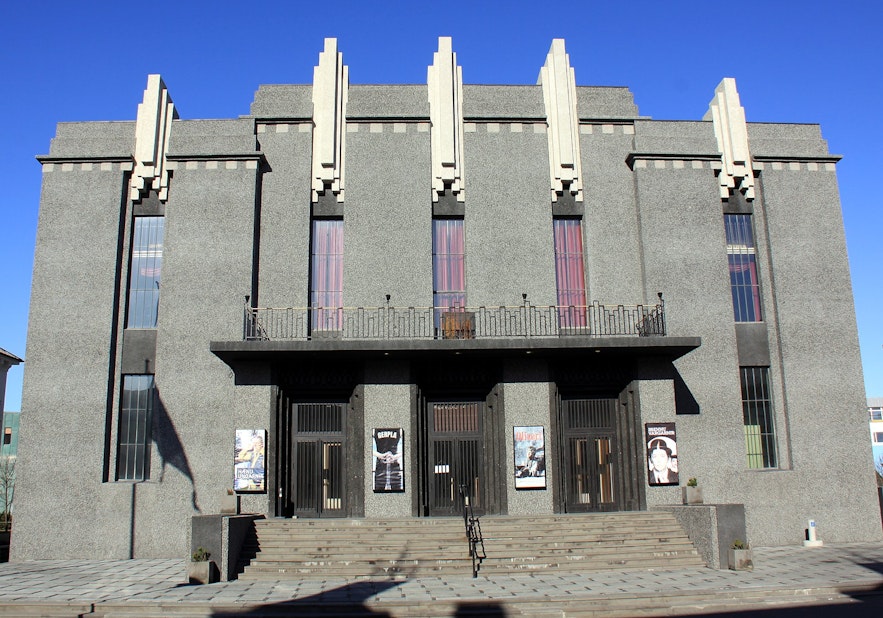
These ideals not only applied to Guðjón's designs of the buildings but their selected materials as well. For instance, the National Theatre boasts portions made of the local rock types obsidian, quartz and Iceland spar, thus integrating the country’s very soil—and soul—into the design of a cultural constitution.
A more rural example of this heritage-inspired approach is found in Guðjón’s design of Héraðsskólinn—formerly a country school, currently a country hotel—at Laugarvatn in South Iceland. The buildings are white and made of stone, but they line up interconnectedly in the style of Iceland’s original turf houses, complete with slanting roofs of green.
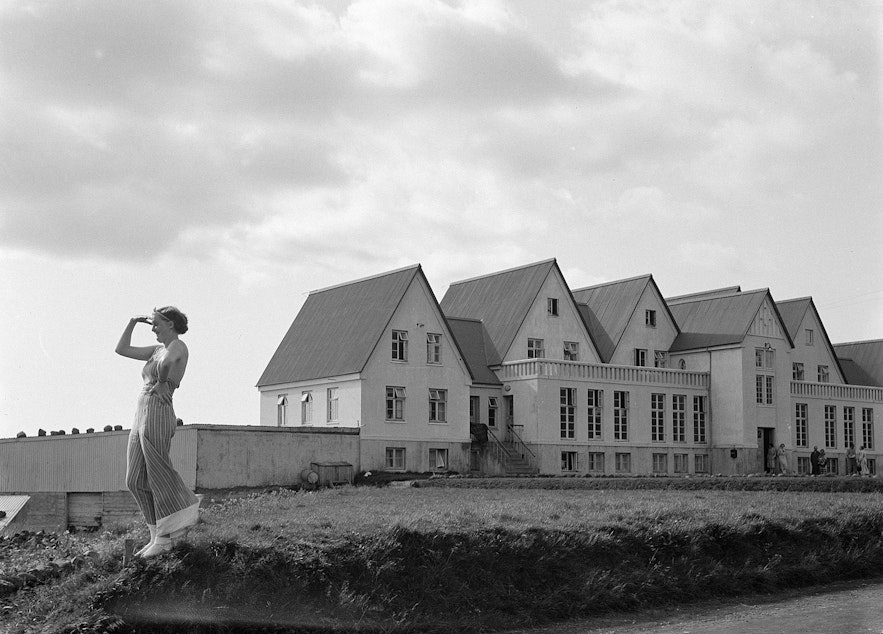 Photo from Wikimedia, Creative Commons, by Willem Van Der Poll. No edits made.
Photo from Wikimedia, Creative Commons, by Willem Van Der Poll. No edits made.
As the official architect of the state, not only did Guðjón have superfluous control over the design of his projects, but of their location and surroundings as well. He sat in the country’s very first City Planning Committee, established 1927, thus significantly influencing the entire cityscape of Reykjavík, as well as the whole of Iceland's various townscapes.
Despite his unprecedented freedom in choosing and producing his many projects, not all of Guðjón’s ideas saw the light of day. One of his more fascinating ventures that never were would be the Háborg design—a cultural city plaza in the heart of Reykjavík.
Háborg's location would have been Skólavörðuholt, boasting an elaborate square resembling such European stables as the Helsinki Senate Square in Finland, and Copenhagen's Amalienborg in Denmark.
The plaza would have accommodated a multitude of the city’s most important museums with a grand cathedral in the middle, surrounded by buildings belonging to the University of Iceland—demonstrating a man with a genuinely revivalist vision.
Today, the only remains of this ambitious project are Hallgrímskirkja Church, and the Einar Jónsson sculpture museum, originally set to be designed by Guðjón—although the job eventually went to architect Einar Erlendsson in collaboration with the sculptor.
Other important works of Guðjón include:
- University of Iceland’s Main Building (the oldest university building in the country, built in 1911)
- Sundhöllin (the oldest indoor public baths in the capital, built in 1937 in the style of Art Deco)
- Akureyrarkirkja Church (the most celebrated landmark of Akureyri in North Iceland, built in 1940)
- Landakotskirkja Cathedral (Iceland’s only Catholic cathedral, built in 1929 in the style of Gothic Revival)
- Hótel Borg (opened in spring 1930, the building marked the beginning of the 'cement age')
- Listasafn Íslands (National Gallery of Iceland, originally an icehouse, constructed in 1916)
- Landsspítalinn’s Main Building (The University Hospital of Iceland, constructed in 1935)
The list goes on, and rest assured you'll have difficulties finding an Icelander that doesn’t recognize Guðjón Samúelsson as the leading influencer of Icelandic architecture.
Rognvaldur Olafsson | The Unsung Father
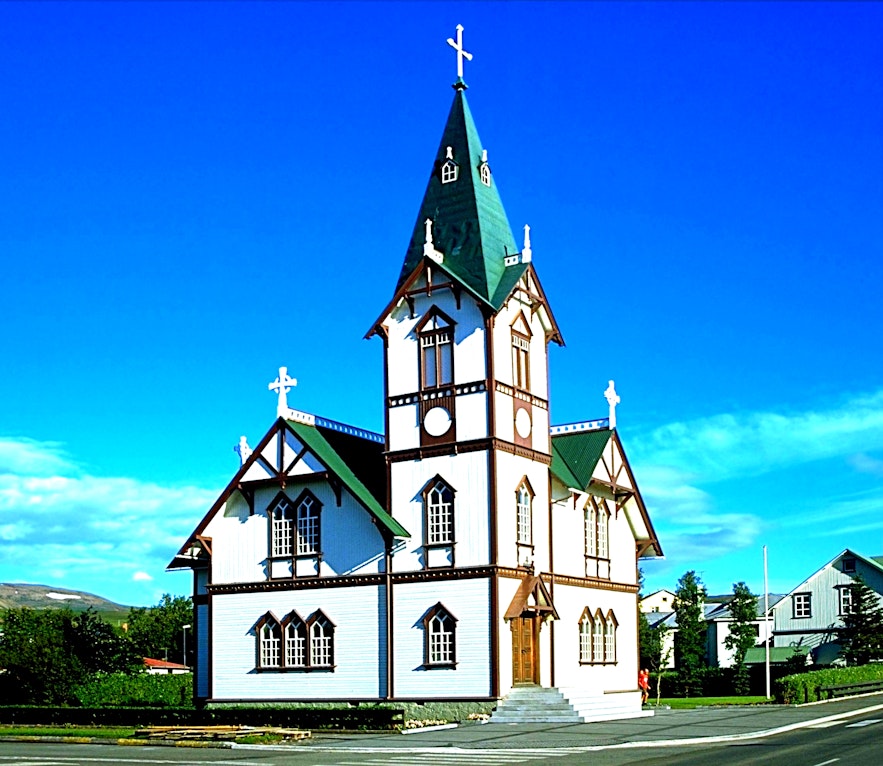
Before Guðjón Samúelsson, there was Rögnvaldur Ólafsson, often designated as the country's original state architect before such a title even existed. Although not widely recognized locally, he is generally considered the first Icelandic architect in history.
With a career that spanned only twelve years, Rögnvaldur was the forerunner of developmental design in Iceland around the turn of the 20th Century, back when the country had just been granted home rule from Denmark.
Being the first Icelander to return home after studying housing design at this momentous time in the country's history, Rögnvaldur was bombarded with work throughout his short but fruitful career, having passed away quite young from tuberculosis.
 Photo from Wikimedia, Creative Commons, by Steven Lek. No edits made.
Photo from Wikimedia, Creative Commons, by Steven Lek. No edits made.
Forced to quit his studies due to an illness, the trailblazer still designed and constructed a myriad of houses, churches, and official buildings, right until his death in 1917. With approximately 150 finished projects to his name, the architect's succession remains unprecedented, given its limited time frame.
- See also: Time in Iceland | A Land of Here and Now
Before the many works of Rögnvaldur, imported Nordic timber houses clad with corrugated iron dominated the architecture of Iceland. Although Rögnvaldur approached many of his projects in this manner, he was also one of the first to incorporate the use of cement, even though Guðjón Samúelsson is often given sole credit for that particular design conversion.
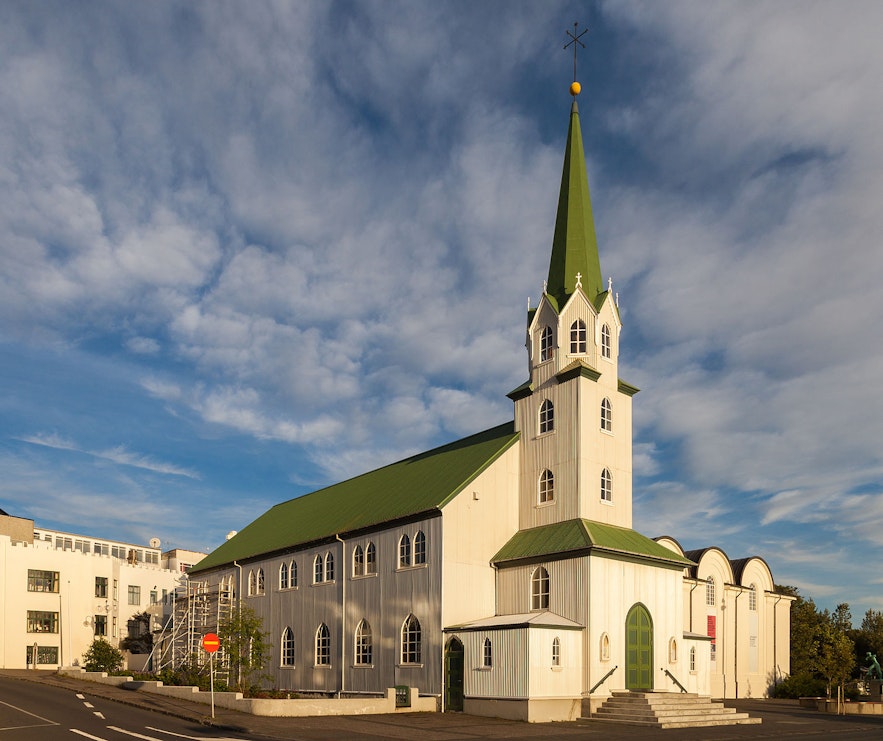 Photo from Wikimedia, Creative Commons, by Diego Delso. No edits made.
Photo from Wikimedia, Creative Commons, by Diego Delso. No edits made.
When looking through Rögnvaldur's work, you see the beginnings of the melting pot that would become the appearance of Iceland's city- and townscapes. As an avid practitioner of Historicism, he had no all-encompassing trademarks to speak of but would fuse together different architectural directions each time around.
Rögnvaldur is responsible for the Edinborg House at Ísafjörður in the Westfjords; the historical country hospital Vífilstaðahælið, which would eventually serve as the architect's final home and place of death; and the Reykjavík Post Office, located at Austurstræti in the city center.
- See also: The Ultimate Guide to Downtown Reykjavík
His most important legacy, however, would be the no-less-than twenty-five churches of his design that dot the Icelandic countryside—which is more than any other Icelandic architect ever produced over his or her lifetime.
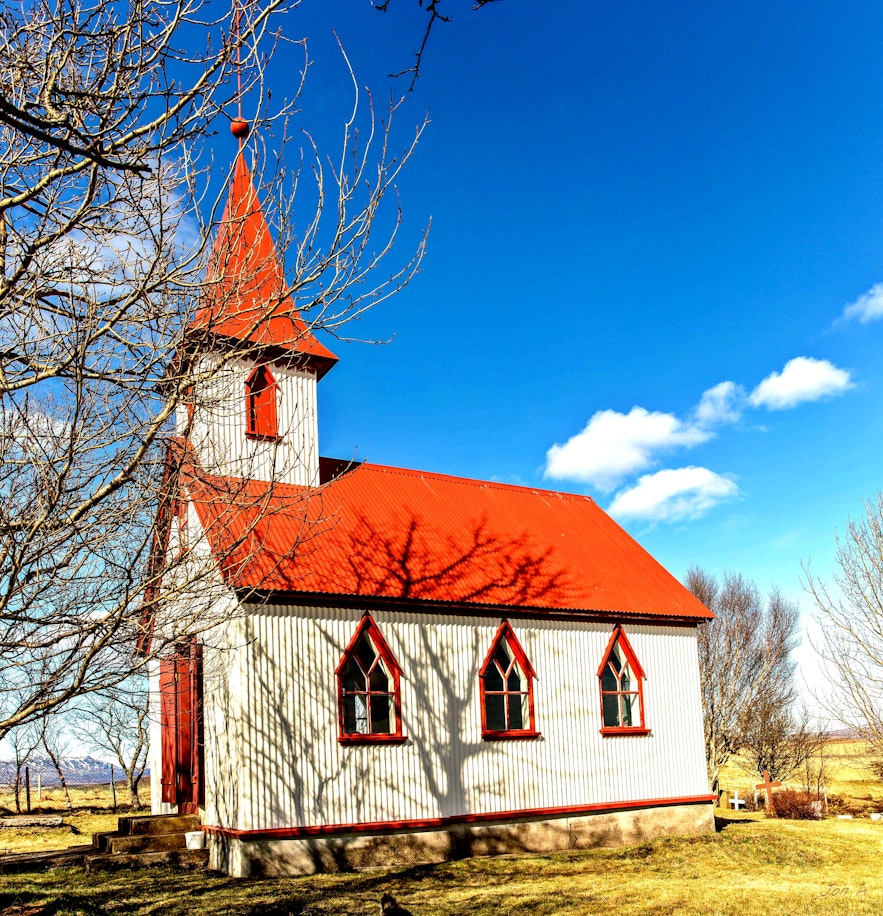
The churches are as diverse as they are many, but most of them deviated from the then-dominant local design of a simple square with a rising front-end tower. What is decidedly the architect's greatest feat is his design of Húsavíkurkirkja—arguably the most beautiful church in Iceland.
Other churches by Rögnvaldur Ólafsson include:
- Hjarðarholtskirkja in Laxárdalur (1904)
- Fríkirkjan in Reykjavík (1902)
- Bræðratungukirkja in Árnessýsla (1911)
- Ólafsfjarðarkirkja in Ólafsfjörður (1915)
- Þingeyrarkirkja in Þingeyri (1911)
- Keflavíkurkirkja in Keflavík (1914)
- Bíldudalskirkja in Bolungarvík (1908)
- Þjóðkirkjan in Hafnarfjörður (1914)
An unsung hero of the scene, Rögnvaldur influenced the very core of Icelandic architecture back when it was first coming to existence, forever influencing the country's direction of design and development.
Einar Sveinsson | The Face of Reykjavik
Einar Sveinsson might not be a household name in Icelandic culture, but his work is everywhere to be seen in Reykjavík. Throughout the 20th Century, Einar designed such a vast amount of the capital, that many would suggest it wouldn't look the same without him.
- See also: A History of Reykjavík and Sightseeing in Reykjavík
The Reykjavík-born wonder is responsible for not only a myriad of nationally known and celebrated buildings like city hospitals and public schools—but a generous amount of housing complexes and the layout of entire city neighborhoods, such as those surrounding Elliðaárdalur Valley.
An official architect of the state from 1934 until his death in 1973, Einar mixed the modern with the classical and functionality with aestheticism, back when the infusing methods of historicism were making way for a more concrete direction in local housing design.
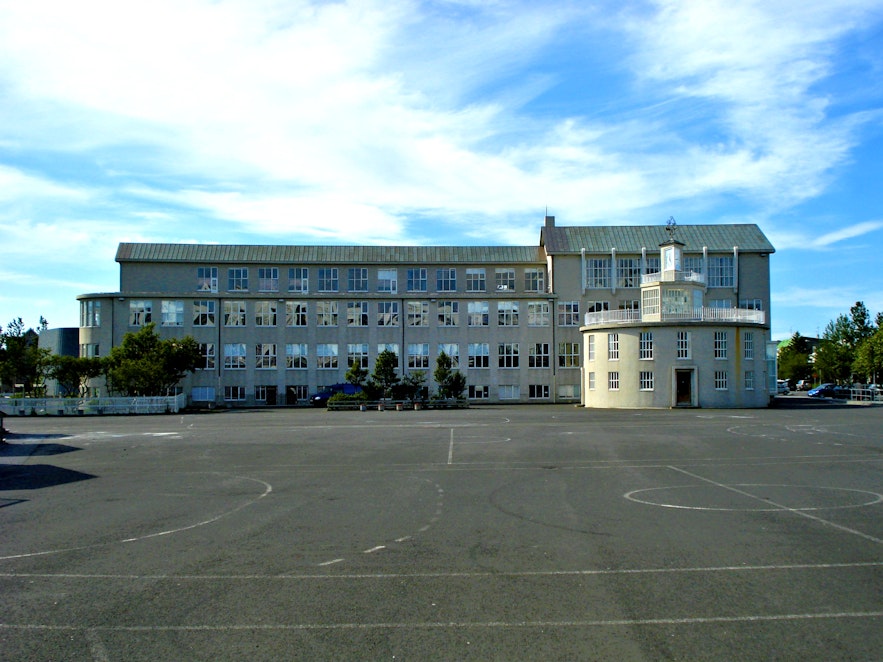
While most Icelandic architects studied in Denmark, Einar got his technical degree in Germany before starting his own firm in Reykjavík. In his studies, he got acquainted with the merits of functionalism—a non-period-specific architectural style in which a building's purpose dominates its design.
Upon arriving at the local scene, still dominated by Nordic influences, Einar quickly became the country’s leading connoisseur of the functionalistic method. Throughout the 1930s and onwards, with some tweaks and variations, the style would become the prevailing trend in the structuring of Reykjavík City and the rest of the country.
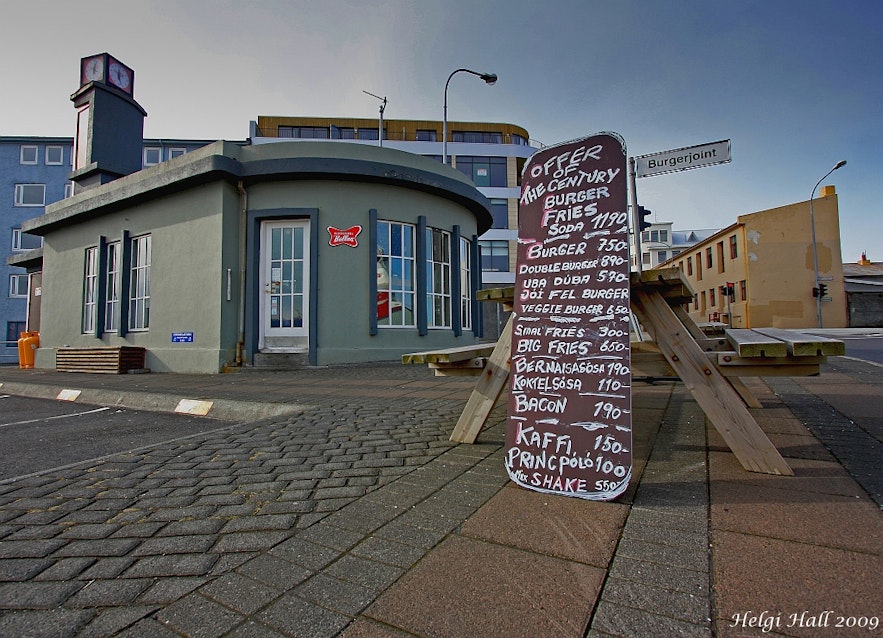 Photo from Wikimedia, Creative Commons, by Helgi Halldórsson. No edits made.
Photo from Wikimedia, Creative Commons, by Helgi Halldórsson. No edits made.
Local architects would strive to create durable structures to withstand the Icelandic weather and environment, all the while not fully abandoning the fusing together of different styles—still adding their own aesthetic flairs and stylistic approaches.
Einar, along with other architects of the same time, understood that the international methods of functionalism couldn’t be blindly applied but had to be done with care and flexibility for the environment at hand. This was evident from one of his first projects at Freyjugata 43, where the architect realized that a flat roof, although practical elsewhere, wouldn’t agree with the harsh Icelandic weather.
 Photo from Reykjavik City Card | 72 Hours
Photo from Reykjavik City Card | 72 Hours
As an avid mathematician, Einar was an architectural whiz who would himself calculate things like the bearing capacity of his designs. He would often work closely with his organizers and workers, and this resulted in the renowned durability of his buildings.
For instance, his classically designed concrete apartment complexes at Hringbraut 37-47, constructed back in the 1940s, still appear singularly unseasoned in comparison with many of the capital’s much younger complexes.
Far from being obstinate in his ideologies, Einar Sveinsson was a brilliant technician who brought together artistic and scientific standpoints, creating aesthetically pleasing but highly functional and durable buildings.
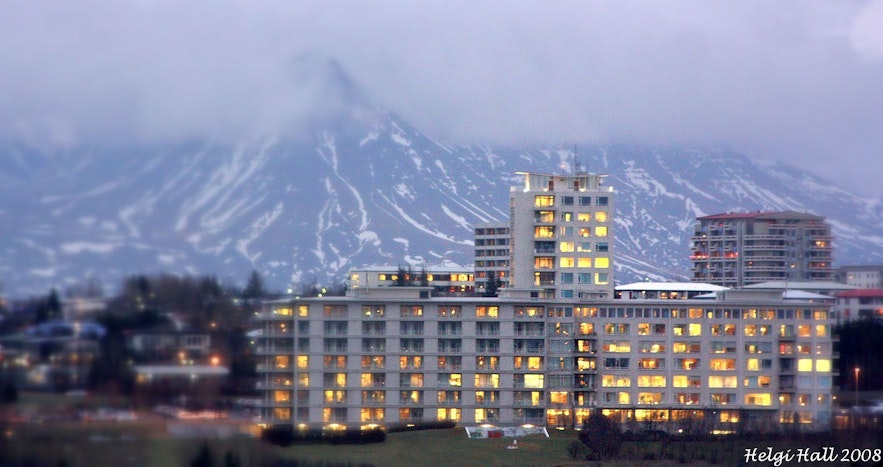 Photo from Wikimedia, Creative Commons, by Helgi Halldórsson. No edits made.
Photo from Wikimedia, Creative Commons, by Helgi Halldórsson. No edits made.
The concrete structures of Iceland’s 1930s are often solely credited to Guðjón Samúelsson, but Einar contributed so significantly to that decade and the others following, and to such heights, that he is given shamefully little credit for the overall visage of the northernmost capital in the world.
Some of Einar's more notable projects include:
- The former Reykjavík Public Health Centre at Barónsstígur
- The Reykjavík City Hospital in Fossvogur
- Melaskóli Public School, located at Hagamelur in Reykjavík's Vesturbær District
- Langholtsskóli Public School, located at Holtavegur in 104 Reykjavík
- Vogaskóli Public School, located at Skeiðarvogur in 104 Reykjavík
- Laugardalur Public Baths (geothermal swimming pool Laugardalslaug)
- Tommi's Burger Joint at Reykjavík's Old Harbour (originally a new's stand and kiosk)
Einar Thorsteinn Asgeirsson | The Genius Geometrist
Dubbed an “architectural mad scientist” by homing magazine Curbed, Einar Þorsteinn Ásgeirsson was something of a rock star in the architecture world.
Despite mostly being known through the projects of others, he was an internationally acclaimed geometer whose inventive and singular designs even caught the eyes of NASA—who scouted him to design portable lunar research laboratories alongside Guillermo Trotti.
Einar, however, was reportedly never much for fame. He was simply a visionary who loved shapes and devoted his life to them, having by the time of his death in 2015 left behind the legacy of creating cells with a new kind of fivefold symmetry design.
Einar named said design gullinfang and, consequently, it then got further developed by artist Ólafur Elíasson, a close friend and year-long collaborator of Einar, for the geodesic dome structure of Harpa Concert Hall and Conference Centre—one of Reykjavík’s most esteemed landmarks.
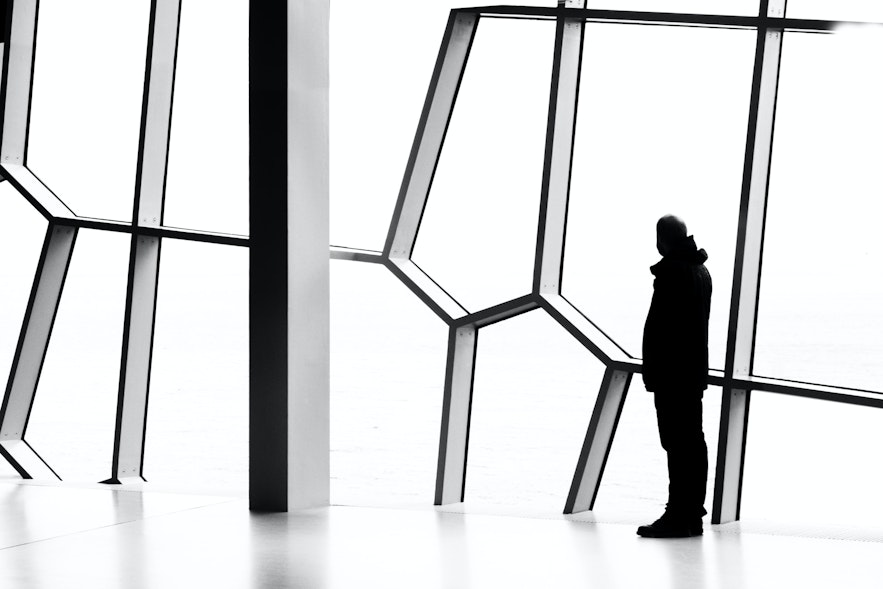 Photo by Fabian Møller
Photo by Fabian Møller
While Ólafur Elíasson is the concert hall's credited designer, it was Einar Þorsteinn who worked behind the scenes to make the building's most distinctive feature even possible. Contrary to popular belief, the glass panels of Harpa are not based upon the basalt landscapes of Iceland—which are hexagonal—but birthed in Einar’s mind after decades of studying the boundaries of three-dimensional shapes.
The reason why the glass panels are so often said to be basalt-inspired is most likely due to Guðjón Samúelsson having popularised such nature-inspired design trends. People see what they want to see, so for instance, if Icelanders were renowned bee farmers, the panels might have been said to be inspired by beehives.
The prodigy was also lauded for his abilities to present his designs through words and concrete models as opposed to digital technology. He was a man who lived and breathed his work, going above and beyond societal restrictions of thought.
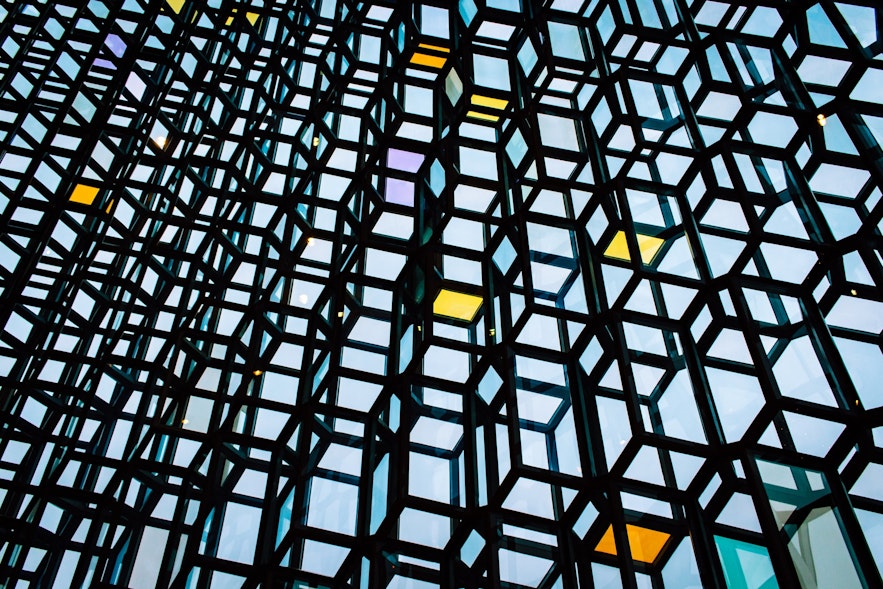 Photo by Daniel Welsh
Photo by Daniel Welsh
As an outside-the-box thinker, Einar is the only known Icelander that jumped on the architectural bandwagon of futuristic space design during the 1960s. Also known as Atomic Age architecture, the style reflects designs influenced by themes of atomic science and the Space Age.
Additionally, Einar was an avid promoter of ecological housing design—decades before such ideas started taking flight throughout Icelandic society and culture. Both of these ideologies are evident in a series of tensile structures and dome buildings by Einar throughout Iceland, designed and built in the 1980s.
A big fish in a small pond, Einar’s ideas were often too ahead of their time to actually be brought to fruition. All the same, his work is scattered across the world, with one of his better-known projects being the geodesic steel structures which he designed alongside Frei Otto for the Munich Olympiapark.
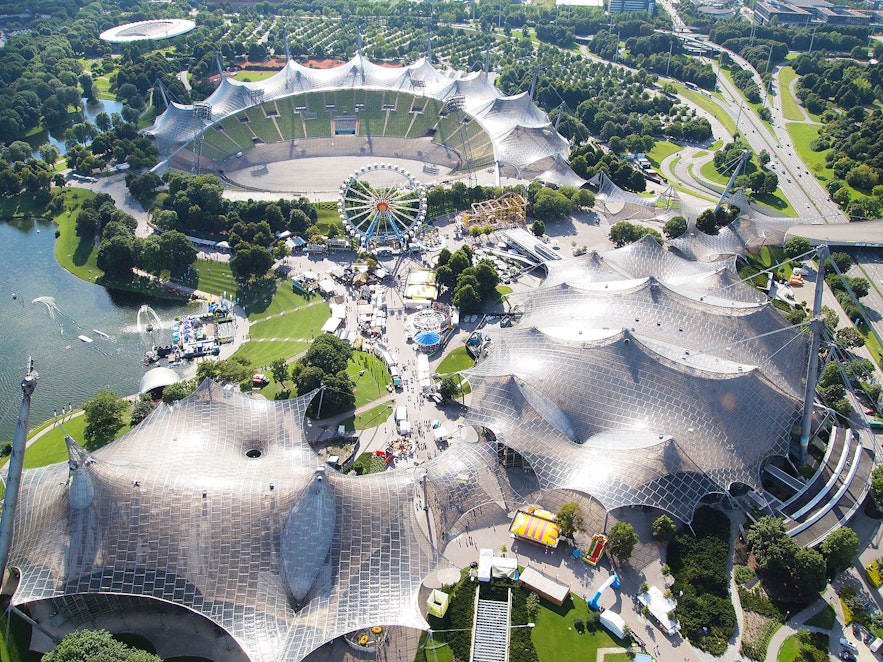 Photo from Wikimedia, Creative Commons, by Tiia Monto. No edits made.
Photo from Wikimedia, Creative Commons, by Tiia Monto. No edits made.
Constructed for the 1972 Summer Olympics, to this day, the structure still stands as a cultural and architectural monument. While Einar was never that well-known in his home country, his many feats have put him on the world map of inventive design.
Back home, however, Einar resided with his wife in their geodesic dream home. The building, designed by Einar himself, is located in the Icelandic countryside close to town Hella on the Golden Circle route. It has the appearance of a dome-shaped turf house and was designed to blend seamlessly with its natural surroundings.

In fact, several Icelanders have since chosen to return to coating their roofs with turf, of which the ancient methods are still faithfully preserved. Far from simply being a stylistic gesture in regards to national heritage, turf roofs are excellent isolators that are ecological by nature and don't require much maintenance.
A genius ahead of his time, Einar will no doubt go down in history as a humble mastermind who decisively enriched the architecture and culture of his home country.
Contemporary Icelandic Architecture
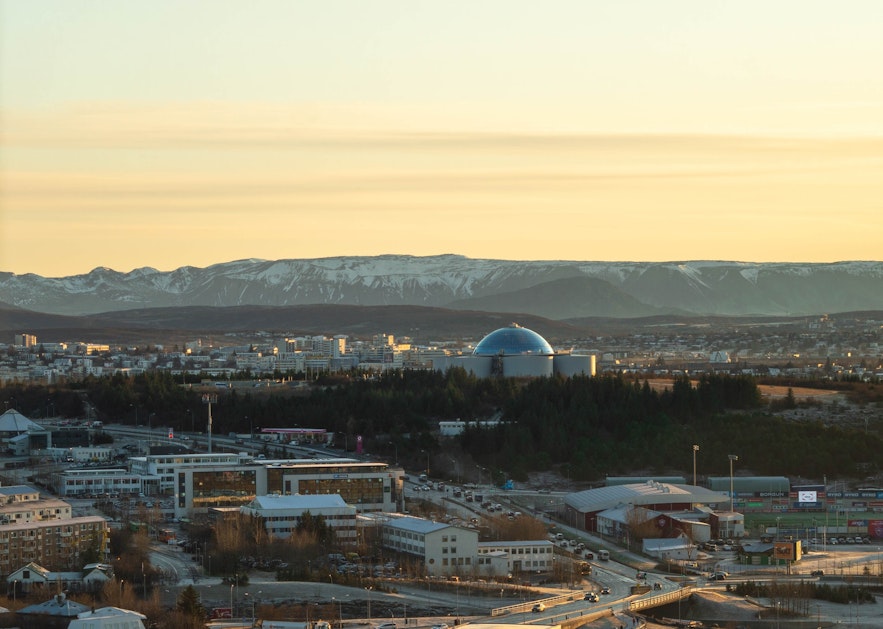 Photo by Glaciers Photo
Photo by Glaciers Photo
From a turf-coated paradise to a young industrial nation, through a handful of key figures, Iceland began to develop an architectural canon. Then, functionalism prevailed until after World War II, when the nation’s newfound riches paved the way for modernism and more extravagant building materials such as steel and glass.
To many, that shift marked a national loss regarding Iceland’s architectural trajectory. While other countries boasted centuries of distinct cityscapes, set to be rebuilt after the war, the land of ice and fire didn’t possess such a reliable foundation. Architecture, as a practice, was still a relatively new phenomenon and littered with influences from various directions.
 Photo by Daniele Buso
Photo by Daniele Buso
By the war’s end, the small nation started thinking big, and people wanted things fast, large and lavish. The connoisseurs of functionalism, who had just begun to establish a direction in local housing design, again lost control of the national environment.
It seemed that Iceland would never escape its status as a cluster of aimlessness when it came to architecture and city planning.
In a way, the very lack of direction in Icelandic architecture serves as its defining factor. The country is a chaotic melting pot of different design styles—although we might recognize distinct periods and individual efforts of great influence within the whirlpool of disarray.
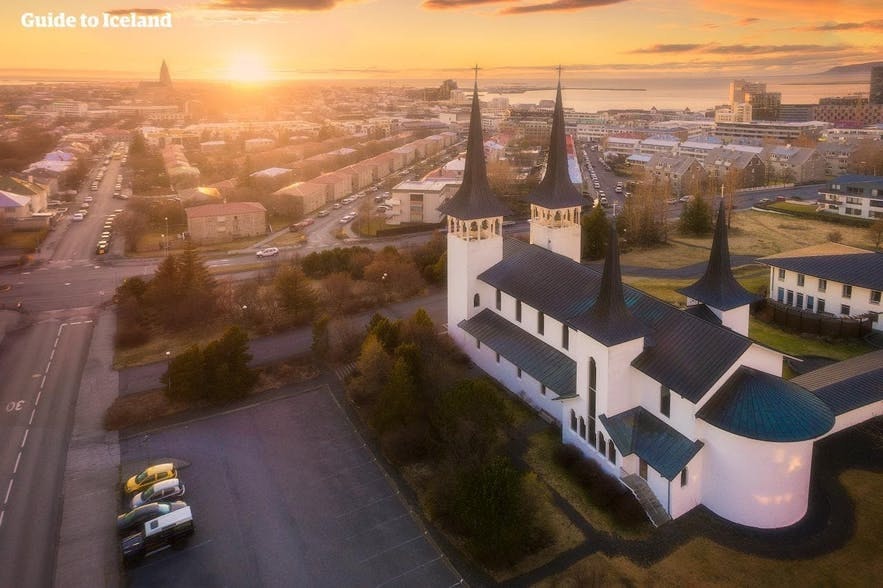
But perhaps it is through lack of tradition that freedom surmounts, and a deciding factor in Reykjavík’s renowned charm is arguably its collage of crisscrossing streets and mismatched houses.
In fact, some of the capital’s most captivating and aesthetically celebrated neighborhoods rose freely before the existence of any planning committees, such as the Grjótaþorp District in central Reykjavík. Most of the precinct’s houses furthermore weren’t schemed by any architect but constructed by builders with a mutual affiliation for local design.

Before Iceland saw its first architects, which wasn’t until about a century ago, the division between art and manufacture was practically nonexistent. A good builder who knew the ropes was everything at once, an architect and an engineer, who both planned and executed the project at hand.
Even after Icelanders started studying architecture, they most often had to get their education abroad. When one architect gets his degree in Italy, another in Scandinavia, and yet another in Germany, when they return, they bring in different cultural influences and emphasis from various corners of the world.

Iceland is a small nation, and aimless as it has seemingly been in its municipality designs, it only takes a few to permanently influence the whole. By associating yourself with the few trailblazers of local architecture, you instantly gain a deeper understanding of the very roots of Icelandic culture.
From turf houses to geometrically designed concert halls, the history of Icelandic architecture is a short one, but each building has a story to tell, and it is through that story that we can learn to embrace the chaos.
What is your favorite aspect of Icelandic architecture? Tell us your thoughts and feelings in the comments below!
Other interesting articles
When and Where to (Not) Get Naked in Iceland
What is the policy on nudity in Iceland? When, where, and why are people getting naked in Iceland? Is it true that you have to wash publicly in the nude to enter the Blue Lagoon? Does this mean you...Read moreThe Ultimate Guide to Game of Thrones in Iceland
Where can you find Game of Thrones filming locations in Iceland? Do you want to visit the breathtaking scenery of the lands Beyond the Wall or the Bloody Gate? Why did the producers choose Iceland,...Read moreThe Ultimate Guide to Getting Married in Iceland
Do you want to have your wedding in Iceland? What do you need to do before tying the knot in Iceland? Are you planning on a private elopement or searching for Icelandic wedding packages? Read on to...Read more

Download Iceland’s biggest travel marketplace to your phone to manage your entire trip in one place
Scan this QR code with your phone camera and press the link that appears to add Iceland’s biggest travel marketplace into your pocket. Enter your phone number or email address to receive an SMS or email with the download link.

